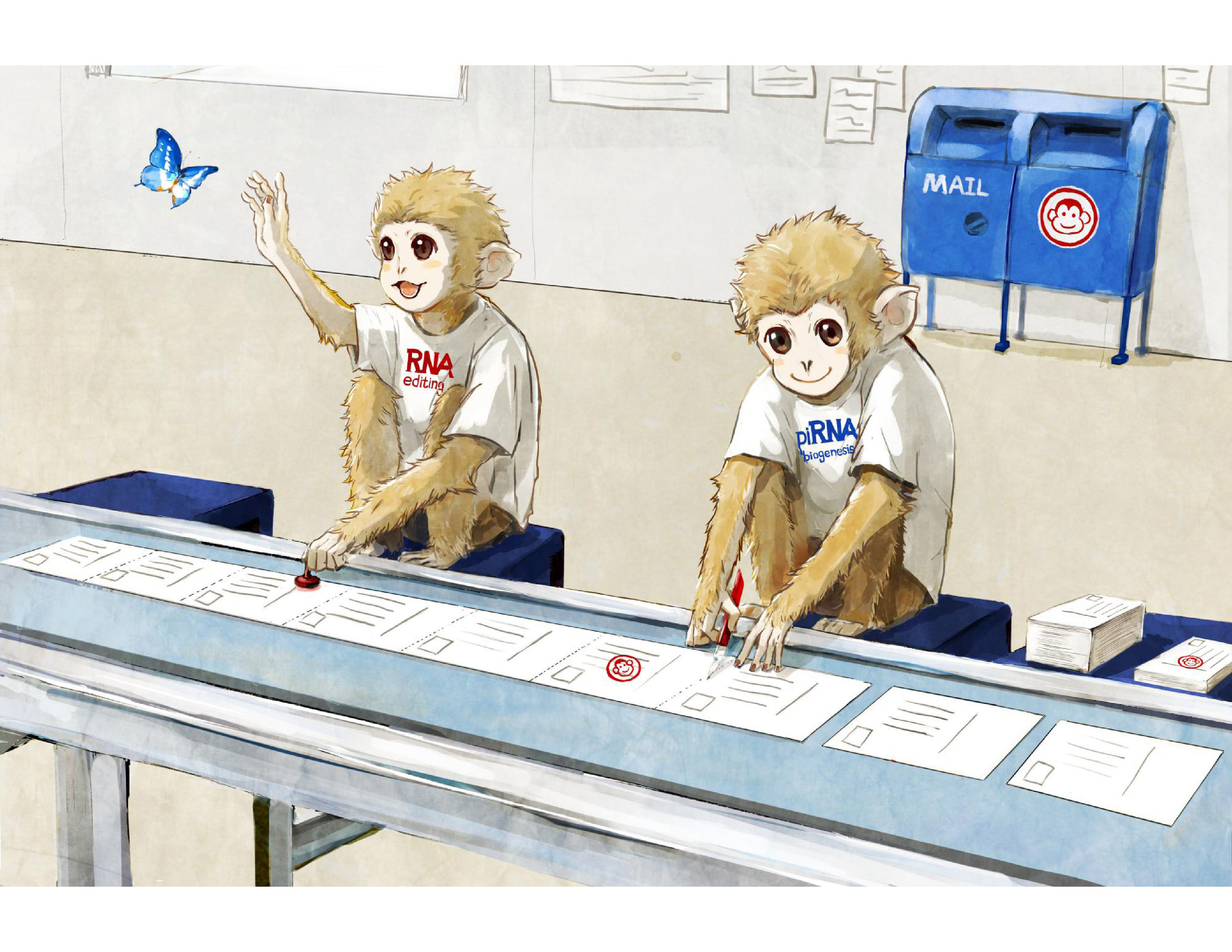The RhesusBase team reports the crosstalk between RNA editing regulation and piRNA biogenesis
2015-09-03

Abstract:
Although millions of RNA editing events have been reported to modify hereditary information across the primate transcriptome, evidence for their functional significance remains largely elusive, particularly for the vast majority of editing sites in noncoding regions. Here, we report a new mechanism for the functionality of RNA editing — a crosstalk with PIWI-interacting RNA (piRNA) biogenesis. Exploiting rhesus macaque as an emerging model organism closely related to human, in combination with extensive genome and transcriptome sequencing in seven tissues of the same animal, we deciphered accurate RNA editome across both long transcripts and the piRNA species. Superimposing and comparing these two distinct RNA editome profiles revealed 4,170 editing-bearing piRNA variants, or epiRNAs, that primarily derived from edited long transcripts. These epiRNAs represent distinct entities that evidence an intersection between RNA editing regulations and piRNA biogenesis. Population genetics analyses in a macaque population of 31 independent animals further demonstrated that the epiRNA-associated RNA editing is maintained by purifying selection, lending support to the functional significance of this crosstalk in rhesus macaque. Correspondingly, these findings are consistent in human, supporting the conservation of this mechanism during the primate evolution. Overall, our study reports the earliest lines of evidence for a crosstalk between selectively constrained RNA editing regulation and piRNA biogenesis, and further illustrates that such an interaction may contribute substantially to the diversification of the piRNA repertoire in primates.
For more details, please refer to the paper:
Selectively Constrained RNA Editing Regulation Crosstalks with piRNA Biogenesis in Primates. Molecular Biology and Evolution, 3 September 2015 doi: 10.1093/molbev/msv183.Xin-Zhuang Yang et al.



